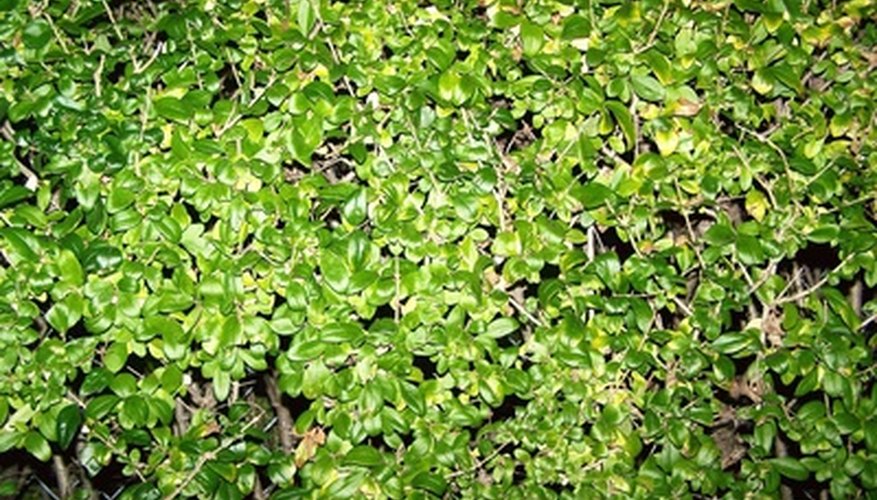Dogs love to chew on sticks and when doing so, they may ingest parts of the plant, mainly the leaves and bark. To your dog, sticks from newly trimmed hedges may look like an opportunity to get a new chew toy. Unfortunately, when your dog decides to chew on the branch of a privet hedge, he may end up needing to go to the vet.
Indentifying Privet Hedges
A privet hedge is a shrubbery used to edge gardens and to create borders. Also known as wild privet, European privet and common privet, they are considered noxious plants because they can become invasive. A privet shrub has shiny green oblong leaves that sit opposite to one another on the stems. The leaves are semi-evergreen, which means most of the leaves will remain green throughout the year. During the spring and summer, white flower clusters form from the tips of branches that turn into purplish black berry clusters in the fall. The berries are poisonous to children, so watch your young children around this plant.
- A privet hedge is a shrubbery used to edge gardens and to create borders.
- The leaves are semi-evergreen, which means most of the leaves will remain green throughout the year.
Toxic Parts of the Plant
The leaves, branches and berries of privet hedges are toxic to dogs. The plant contains a toxin called terpenoid glycosides, which can poison your dog if ingested. Signs of privet poisoning include upset stomach, loss of appetite, coordination problems, rapid heartbeat and in some cases death can occur.
What to Do
As soon as your dog has eaten the privet, call your pet's veterinary office. Tell the vet how much privet your dog has ingested, how long ago the dog ate the privet and if he is exhibiting any symptoms. The veterinarian will instruct you what to do.
Prevention
Dogs are naturally curious, so a shiny, green-leaved plant may look pretty interesting to play in. The best way to make sure your dog doesn't get into privet hedges is to prevent the pet from coming in contact with the hedge. Keep the dog away from the hedge with a protective barrier or remove the privet hedge from your yard and replace it with a nontoxic alternative hedge. Avoid planting plants in your yard such as box hedges, azaleas, rhododendrons, yews, hollies, mistletoe, buttercups, lilies, foxgloves, amaryllis, delphiniums, narcissus, daffodil, hyacinth and poinsettias because they are also toxic to dogs.
- Dogs are naturally curious, so a shiny, green-leaved plant may look pretty interesting to play in.
- Keep the dog away from the hedge with a protective barrier or remove the privet hedge from your yard and replace it with a nontoxic alternative hedge.
